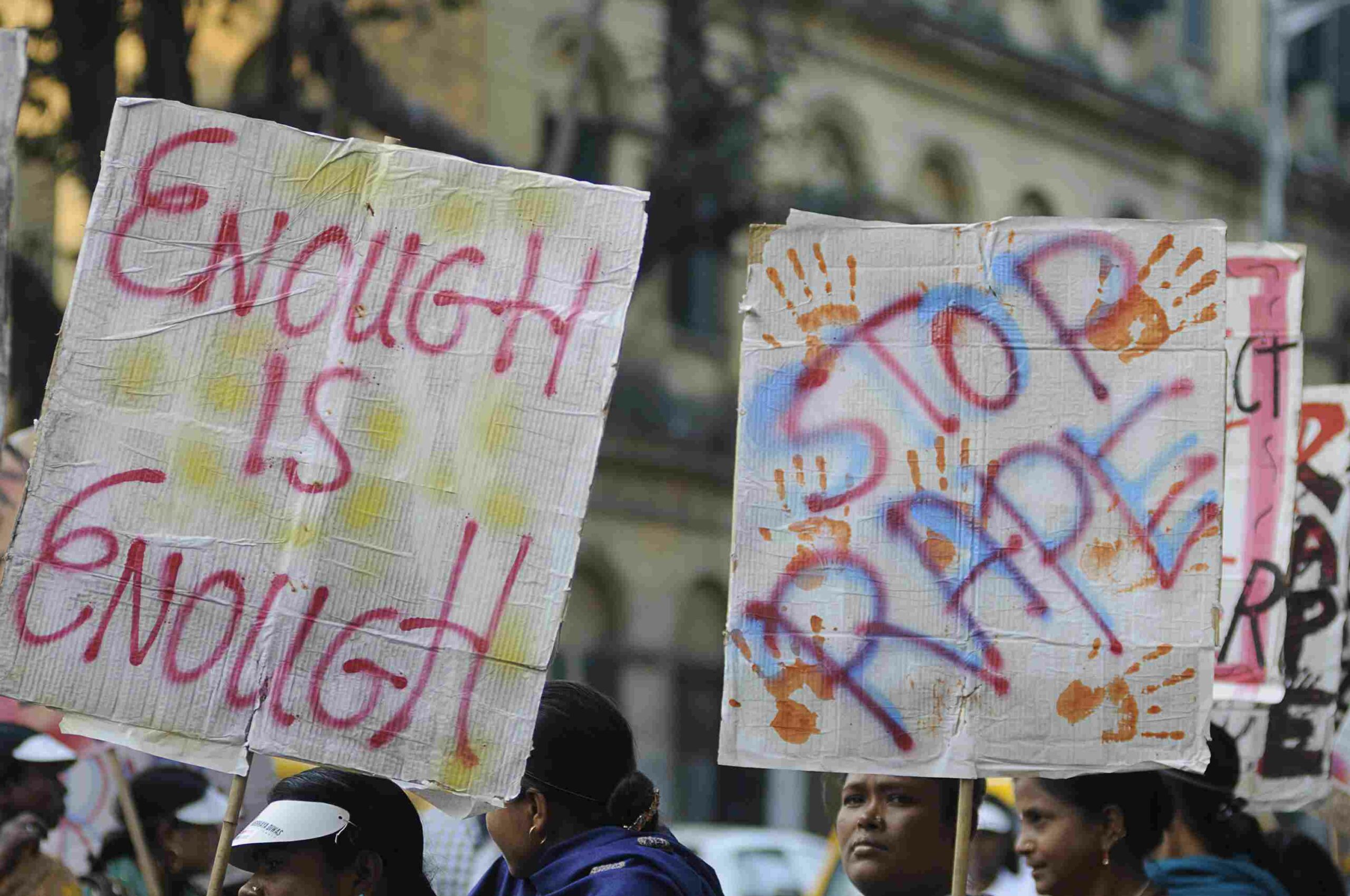Bhumi Pednekar’s Bhakshak: How A TISS Team Blew The Lid Off Bihar Shelter Home Abuse Case
The movie Bhakshak is based on the harrowing Muzaffarpur girls' shelter home case, where 34 minors endured sexual abuse — discovered during a TISS social audit in 2018. The film depicts the distressing narrative of this case, revealing systemic sexual abuse in many of Bihar’s institutions.

The trailer for ‘Bhakshak’ opens with a poignant scene depicting young girls residing in a shelter home in Bihar. Starring Bhumi Pednekar, Aditya Srivastava, and Sanjay Mishra, the film delves into the harrowing narrative inspired by the Muzaffarpur shelter home abuse case that reverberated across the nation in 2018.
Former Bihar MLA Brajesh Thakur and 11 others currently serve a life sentence for their involvement in the appalling sexual assault of numerous minor girls.
This tragic episode came to light through a social audit report conducted by a dedicated team of researchers from Koshish — a Field Action Project focusing on homelessness and destitution at the Tata Institute of Social Sciences (TISS). Over a span of six months, commencing in October 2017, a team of seven diligently surveyed more than 110 institutions either operated or supported by the Bihar Government.
While the primary aim of the social audit was to assess the functioning of these institutions, gauge the well-being of their residents, and identify gaps in the implementation of welfare schemes and the quality of care provided, the findings were nothing short of alarming for the researchers. They uncovered widespread instances of sexual abuse and violence in nearly 17 institutions, revealing a deeply disturbing reality.
The report submitted by TISS to the Bihar Government in May 2018 marked 17 institutions as ‘grave concern’, which required immediate attention. One of these institutions was Balika Grih (girl’s shelter home) run by Brajesh Thakur’s NGO Seva Sankalp Evam Vikas Samiti. The TISS researchers, led by Mohd Tarique, found that the girls in this home were sexually abused and assaulted.
Further investigation by the police and medical examination found that 34 girls at the home, between the ages of 7 and 17, were sexually assaulted. The case was then transferred to the CBI and 20 people were charged in the incident.
The prime accused, Thakur, who ran other shelter homes too, was convicted on multiple grounds of rape, gangrape (Section 376(d), IPC), criminal conspiracy, aggravated sexual assault under Section 6 of the POCSO Act, and offences under the Juvenile Justice Act.
The Better India spoke to Mohd Tarique about how the TISS unearthed this heinous crime.
A social audit that exposed an appalling case

TISS was working with the Bihar Government as a knowledge partner for the social welfare department. The then Principal Secretary, Department of Social Welfare, Atul Prasad, asked the team to conduct a social audit of all the institutions as he felt that there were lapses in the functioning of the same. As only a social audit, which involves speaking to the people on the ground, would uncover the true picture, it was decided that the team should conduct a detailed investigation.
The institutions included adoption agencies, children’s homes, short-stay homes for women, old age homes, and more. Initially, only institutions run by NGOs were to be covered, but later Government-run homes were also included in the ambit.
What really helped the team, according to Tarique, was the methodology they used.
“Having worked with the homeless for over two decades, I knew how we needed to approach and speak to the residents of such homes. We had strict rules when we entered each institution and spoke separately to the chiefs, staff members, and residents, and conducted a physical check of each facility,” explains Tarique.
Right from the time they entered a home, they looked for non-verbal signs, which said more than words. They gauged the situation from the atmosphere at each institution. For example, if they found children sitting very quietly, in an organised manner, with fear in their eyes, it was a red flag, says Tarique.
They also did not allow any staff members to join when they conducted focus groups with the residents, be they children or elders.
“We had to win the trust of the children in a short period of time. We did not allow any staff members inside when we spoke. We did not accept any refreshments when we entered. In fact, if staff members tried to delay our meeting with the residents by offering snacks, it was also a sign of something amiss for us,” adds Tarique.
If staff tried to keep interrupting in the pretext of some refreshments while they spoke to the residents, that too was a sign of alarm.
The most important thing, according to the social worker, was not acting immediately, based on the concerns. “First, the child will test you by sharing a minor incident. If you go and question the staff immediately, the child will be reprimanded and won’t trust you. It’s only when they trust you that they will feel comfortable sharing the graver incident. If we get into the mode of fixing things, we might lose out on the more serious incident that the child wanted to report,” he adds.
They adopted a balanced, strategic approach, where being neutral was key.
Children seldom share incidents of abuse openly, according to him. They tried to create an environment that encouraged children to come forward and speak. “Children shared that another child has been abused. They will always use another person’s name,” he informs.
While they conducted focus groups, children who wished to speak alone did so. It was through this approach that they found alarming signs at the Balika Grih in Muzaffarpur.
They also observed the non-verbal communication between the staff members. At these places that they marked ‘grave’, they found an atmosphere of fear and the air of something being hidden.
After their over six-month audit across 38 districts, they finally submitted the report.
Highlighting the dreadful situation at the Balika Gruh, which was a state-run home, they found that it was being run in a questionable manner. They also found that the girls were locked up in their rooms and had no access to open space.
They escalated their fears and recommended immediate further probe. The Bihar Police then filed an FIR at the women’s police station in Muzaffarpur in May 2018 and named 11 people, including Brajesh Thakur. A medical report found that “34 of the 44 girls at the home were drugged and raped”.
The Supreme Court intervened and transferred the case to the CBI, which charged 20 people, including nine women.
The girls were shifted to different homes soon and 17 of them were sent to Bengaluru to do hotel management. A report by The Indian Express found that 17 of those 34 girls have built their lives and are working in hotels across the country. Seventeen of the girls are with their families now, as per the same report.
“It feels like we are born again, in a better world. We have a reason to put our torturous past behind,” said a woman from the home who works in a four-star hotel in Bengaluru to The Indian Express.
(Edited by Pranita Bhat)
Sources
‘Five years on, girls who survived abuse in Muzaffarpur shelter home rebuild their lives’ by Santosh Singh for The Indian Express, Published in 25 November, 2023
If you found our stories insightful, informative, or even just enjoyable, we invite you to consider making a voluntary payment to support the work we do at The Better India. Your contribution helps us continue producing quality content that educates, inspires, and drives positive change.
Choose one of the payment options below for your contribution-
By paying for the stories you value, you directly contribute to sustaining our efforts focused on making a difference in the world. Together, let’s ensure that impactful stories continue to be told and shared, enriching lives and communities alike.
Thank you for your support. Here are some frequently asked questions you might find helpful to know why you are contributing?


This story made me
-
97
-
121
-
89
-
167















